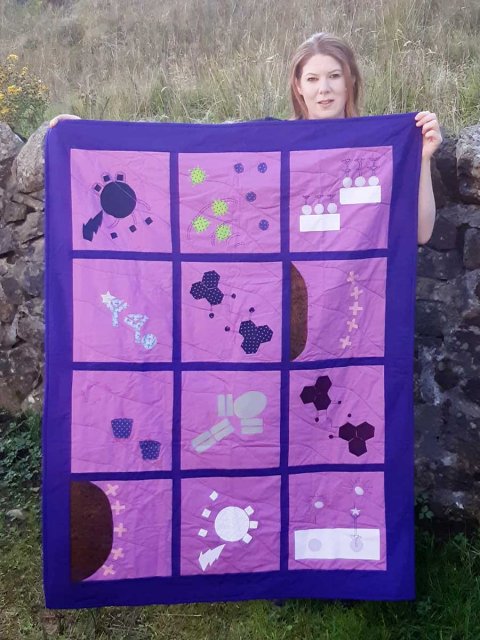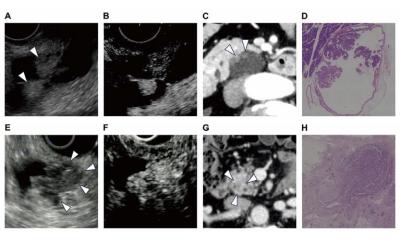News • Unique awareness campaign
Crafting quilts to fight pancreatic cancer
Chemistry researchers at the University of Strathclyde are aiming to raise awareness of pancreatic cancer – with the use of specially-made quilts.
Fellow cancer researchers across the UK are being asked to send diagrams illustrating their work. These will then be used as the patterns for quilts made by skilled crafters. After the project is concluded, the Strathclyde researchers hope to be able to display the quilts in an exhibition, which may be held online if a physical exhibition is not possible. The quilts will then be donated to local pancreatic cancer patients.

Image source: University of Strathclyde
The project, titled Quilts4Cancer, is being funded through a grant of £4700 from the Royal Society of Chemistry. It has also been endorsed by the charity Pancreatic Cancer UK.
Nearly 9,500 people each year are diagnosed with pancreatic cancer in the UK. Dr Clare Hoskins, a Reader in Strathclyde’s Department of Pure and Applied Chemistry, is leading Quilts4Cancer, along with Dr Kirsty Ross, the Department’s Outreach Officer. The programme is being launched to coincide with Pancreatic Cancer Awareness Month in November. Dr Hoskins said: “Funds for cancer research have dropped significantly in the pandemic but we aim to raise awareness of chemistry research across the UK towards better therapies for pancreatic cancer, as well as raising awareness of its signs and symptoms.
“We chose to have quilts made because it’s known that chemotherapy patients get cold during their treatment. The therapy has serious side effects but we want to raise awareness of the new technology and compounds coming through; a lot of work is being done on making treatment safer, with fewer side effects. We’re asking for researchers in the chemical sciences to send simple diagrams based on their research, with small summaries of what it is and who is carrying it out. It could show the chemical structures of treatments or technology such as ultrasound equipment.
“My design illustrates my research in laser-activated nanomedicine. It shows nanoparticles which have been found to penetrate deep into pancreatic tumour tissue, allowing for drug treatments to reach the site where they are required and help reduce the unpleasant side effects. These nanoparticles act as ‘chaperones’ for the drug molecules, carrying their cargo past the body’s defence systems and to their target site. On arrival, a laser beam activates them to release their drugs, making them more effective than conventional chemotherapy. The nanocarriers themselves are relatively simple and cheap to make and they can be easily tailored for different uses and cancer types.”
Source: University of Strathclyde
24.10.2020





